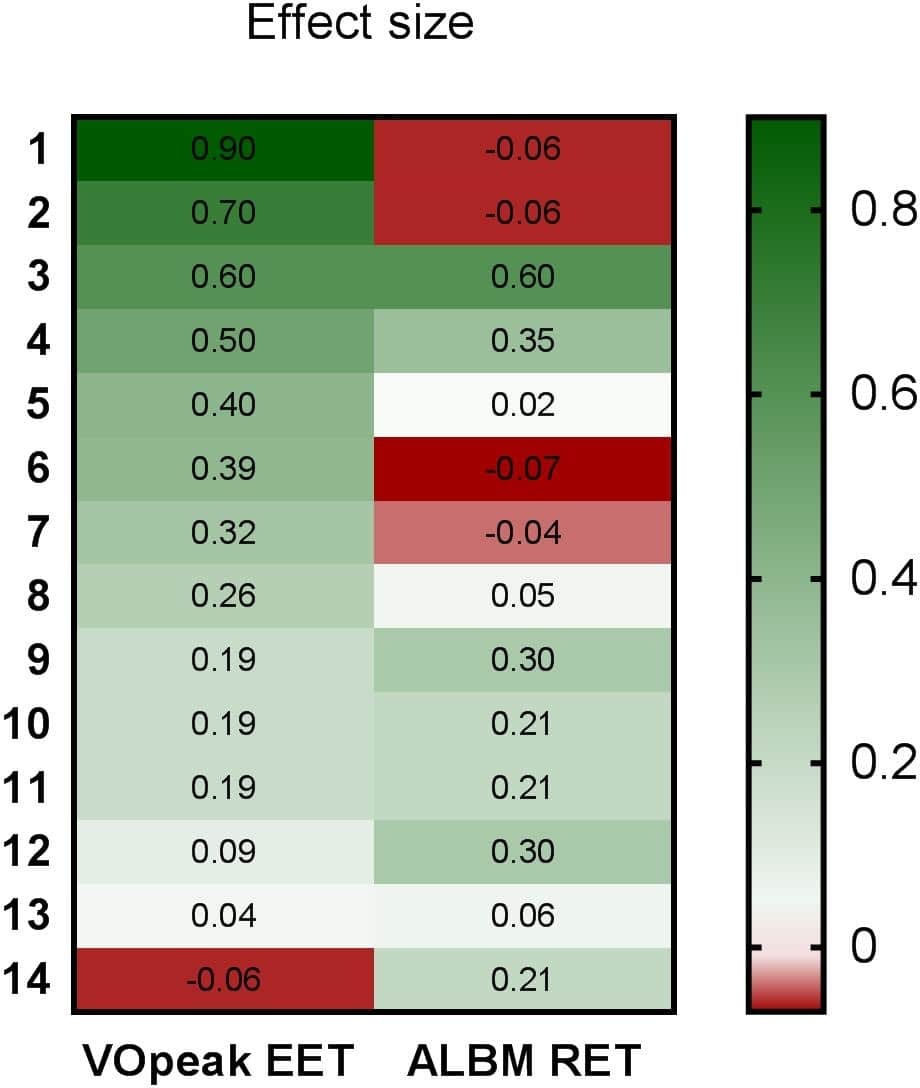Introduction: Physical activity reduces the risk of diabetes, cardiovascular diseases, and chronic respiratory diseases and improves general health. Although physical activity per se, including both endurance exercise training (EET; prolonged aerobic activity) and resistance exercise training (RET; moving the resistive force of an external load), in the main lowers blood pressure and improves lipid profiles and insulin sensitivity1, each of these distinct training modes triggers unique physiological adaptation. EET enhances aerobic capacity as a result of mitochondrial biogenesis and angiogenesis2; in contrast, RET increases muscle mass and associated strength/power3. However, in most cases, the magnitude of response varies among participants regardless of mode. For example, ~20% of participants showed limited improvement in aerobic fitness after several weeks-to-months of EET4. Similarly, hypertrophic responses ranged from 0-10% after supervised RET5. This response variation is not related to a pre-existing subject characteristic such as gender, age, muscle mass, or habitual physical activity, which make the underlying mechanisms of exercise resistance unclear. Aim: To explore ‘within individual’ heterogeneity of adaptations to RET/EET using a cross-over design. Methods: The study was conducted as a 14-week cross-over intervention (vis-à-vis: 4-weeks RET or EET; 6-weeks wash-out; 4-weeks EET or RET). Pre- and post-analyses were held for each training mode in relation to measures of aerobic capacity (VO2 peak/anaerobic threshold (AT)) and muscle mass (by DXA). Paired and unpaired t-tests were used. Data are means±SD. P value <0.05 was considered significant. Results: 4-weeks of EET improved VO2peak (42.8±10.4 vs. 45.9±9.4 ml/kg/min; P=0.004) and AT (24.9±8.1 vs. 28.7±8.9 ml/kg/min; P<0.0001)), while RET enhanced appendicular lean body mass (ALBM) (26.8±4.3 vs. 27.4±4.1 kg; P=0.014). The 6-week washout was sufficient to reverse these adaptive values to baseline. i.e. VO2peak pre-EET (44.1±7.7 ml/kg/min) was identical to pre-RT (44.6 ± 5.7 ml/kg/min; P=0.89). The same was true for AT (P=0.88). Similarly, ALBM pre-RET (26.8±2.2 kg) was not different to ALBM pre-EET (27.2±2.6 kg; P=0.40). Finally, our data (Figure 1) illustrates a range of exercise-mode specific (i.e. only responding to one or the other mode) and non-specific (i.e. responding to neither or both modes) trainability traits. Conclusion: Four-weeks of exercise training was sufficient to elicit anticipated exercise-mode specific adaptations i.e. aerobic capacity gains with EET and lean mass gains with RET. A 6-week washout was sufficient to reverse these gains. Finally, as expected, responses to EET and RET within groups was variable; however, across exercise mode, responses were also unpredictable – traits for which biomarkers should be sought.
Physiology 2019 (Aberdeen, UK) (2019) Proc Physiol Soc 43, PC095
Poster Communications: The plasticity of “exercise adaptability” in relation to resistance vs. endurance training
W. F. Farrash1,3, E. Crombie1, N. Gharahdaghi1, P. J. Herrod1, D. Wilkinson1,2, K. Smith1,2, B. Phillips1,2, P. Atherton2
1. University of Nottingham, Derby, United Kingdom. 2. NIHR BRC, Nottingham, United Kingdom. 3. Applied Medical Sciences, Umm Al-Qura University, Makkah, Makkah, Saudi Arabia.
View other abstracts by:
Figure 1: Effect size of two modes of exercise training on a primary endpoint expected to improve with that mode of exercise in 14 young individuals. The effect size was calculated by dividing difference (post-pre) by standard deviation of baseline (pre) values. VO2 peak was used to represent the endurance exercise training (EET) response, from the highest to the lowest, with the corresponding appendicular lean body mass (ALBM) response for resistance exercise training (RET) presented.
Where applicable, experiments conform with Society ethical requirements.

